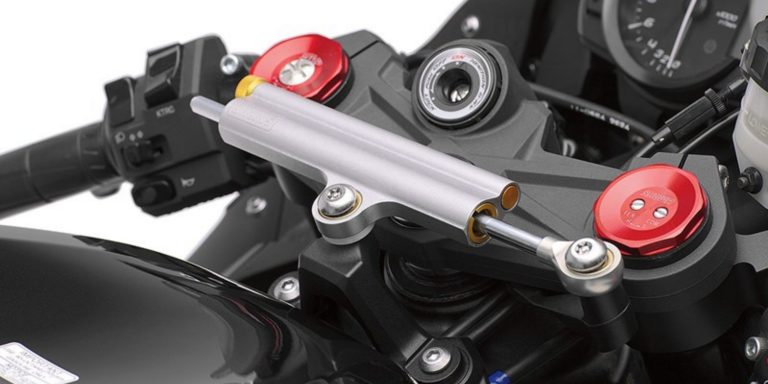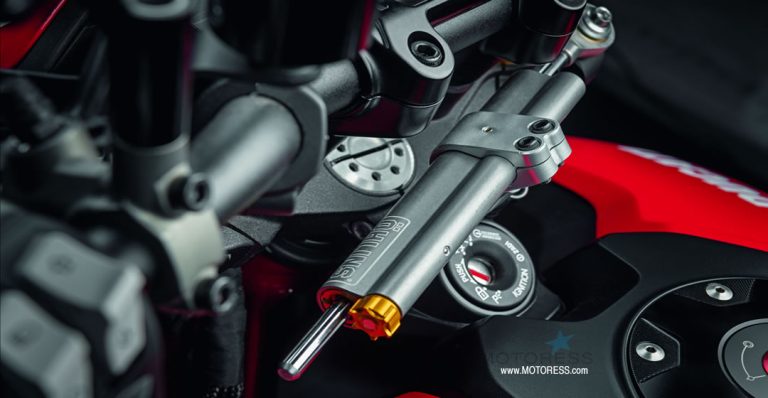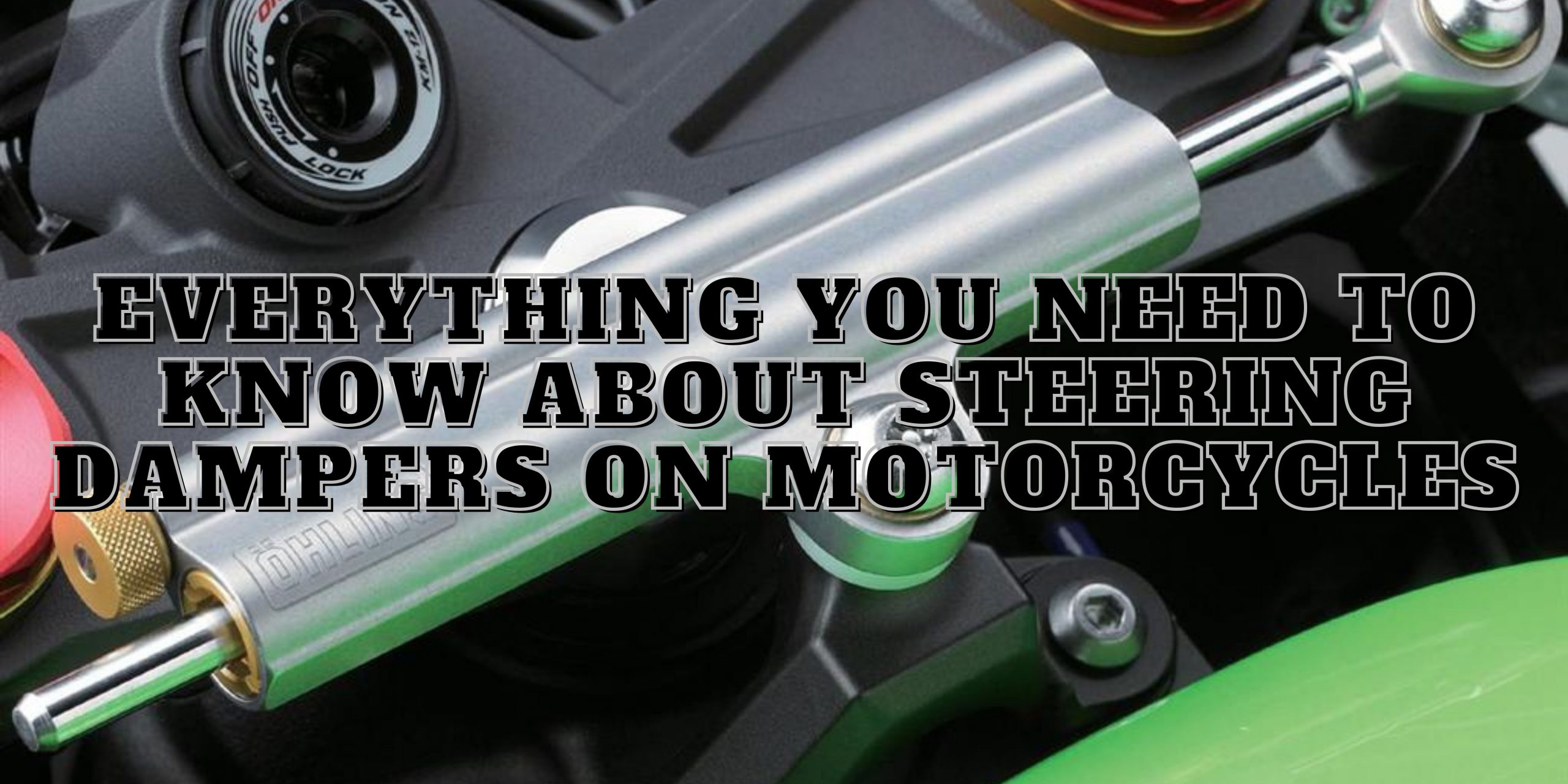If you’re a motorcycle rider, you know that a steering damper is essential for your bike. But what exactly is it, and what does it do? This blog post will discuss the role of a steering damper on a motorcycle and explain how it helps keep your bike under control. We’ll also talk about the different types of dampers available and help you decide which one is right for you. So whether you’re just starting in motorcycling or you’ve been riding for years, read on to learn more about steering dampers!
What is a steering damper, and what does it do on a motorcycle?
Steering dampers, also known as stabilizers, are devices mounted to the frame of a motorcycle. Their purpose is to help reduce the amount of feedback that is transmitted to the rider’s hands, making it easier to keep the bike in a straight line. Steering dampers work by using hydraulic fluid to absorb vibrations. As the bike moves over bumps and other irregularities in the road, the fluid is forced through valves and chambers. This action effectively dampens the vibrations, making them less noticeable to the rider. While steering dampers are not essential for every motorcycle, they can be a valuable addition for bikes ridden on rough roads or in high-speed conditions.

How do you know if your bike needs a steering damper replaced or repaired?
A steering damper is an important component of your bike’s suspension system. It helps absorb shocks and vibrations, keeping the bike stable and easy to handle. However, steering dampers can wear out over time or become damaged, affecting their performance. So how can you tell if your bike’s steering damper needs to be replaced or repaired?
One obvious sign that something is wrong with your steering damper is if your bike starts to feel shaky or unstable. Another indication that the damper may need to be replaced is if you notice a foul smell coming from the front of the bike. This is usually caused by leaking oil, which can damage the damper and other parts of the suspension system. If you suspect that your steering damper needs to be replaced or repaired, take it to a qualified mechanic for an inspection. They will be able to diagnose the problem and recommend the best course of action.
What are some signs that you may need to have your steering damper serviced or replaced soon?
If you notice that your steering feels loose or unresponsive, it could signify that your steering damper needs to be serviced. Another sign is if your vehicle starts to veer to one side when you hit a bump in the road. If you’re not sure whether or not your steering damper needs to be serviced, it’s best to take it to a mechanic and have them take a look. They’ll be able to tell you for sure and advise you on what needs to be done.

What are the benefits of having a good steering damper on your motorcycle?
A steering damper is a vital part of your bike’s suspension system. It helps absorb shocks and vibrations, keeping the bike stable and easy to handle. A good steering damper can also improve your bike’s cornering ability, making taking curves at high speeds easier. If you’re looking for an upgrade for your motorcycle, a steering damper is an excellent choice. Not only will it improve the performance of your bike, but it will also help keep you safe while riding.
When shopping for a steering damper, what should you look for?
There are a few things to keep in mind when shopping for a steering damper. First, consider the riding you do and the conditions you typically ride in. If you frequently ride on rough roads or in high-speed situations, you’ll need a damper designed to withstand those conditions. Second, think about the size and weight of your bike. Heavier bikes will require a more robust damper, while lighter bikes can get by with a less heavy-duty model. Finally, consider your budget. Steering dampers range in price, so it’s essential to find one that fits your needs and budget.

When installing a steering damper, what are some things you should keep in mind?
Installing a steering damper is a relatively simple process, but there are a few things you should keep in mind. First, make sure that the damper is compatible with your bike. Second, follow the instructions carefully and torque all of the bolts to the correct specifications. Third, pay attention to where the damper is mounted. The location will affect how well the damper works, so make sure it is mounted in the correct spot. Finally, test the damper before you ride to ensure it is working correctly.
How much will it cost to have a steering damper repaired or replaced on your bike?
Depending on the brand, model, and year of your bike, the cost of repairing or replacing a steering damper can vary widely. Generally speaking; however, you can expect to pay anywhere from $200 to $600 for parts and labor. If you’re handy with tools and comfortable working on your bike, you may be able to do the work yourself and pay for the parts, which can range from $50 to $250. Of course, the best way to avoid having to repair or replace your steering damper is to maintain it in the first place properly. Regularly checking for leaks and worn-out parts can help you avoid costly repairs down the road.
Where can you find a reputable motorcycle mechanic who offers steering damper services in your area?
If you need a reputable motorcycle mechanic who offers steering damper services, there are a few ways you can go about finding one. One option is to ask friends or family members who ride motorcycles for recommendations. Another option is to search online for motorcycle mechanics in your area. Once you’ve found a few potential candidates, be sure to read reviews from other customers before making your final decision. By finding a reputable and qualified mechanic, you can help ensure that your motorcycle is in good hands.

Conclusion
A steering damper is a vital part of your motorcycle’s suspension system. It helps absorb shocks and vibrations, keeping the bike stable and easy to handle. A good steering damper can also improve your bike’s cornering ability, making taking curves at high speeds easier. When shopping for a steering damper, consider the type of riding you do, the size and weight of your bike, and your budget. When installing a steering damper, follow the instructions carefully and test the damper before riding. With proper maintenance, a steering damper can last for many years. If you need a reputable motorcycle mechanic who offers steering damper services, ask friends or family members for recommendations, or search online for reviews. By taking the time to find a qualified mechanic, you can help ensure that your motorcycle is in good hands.





